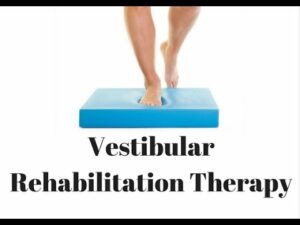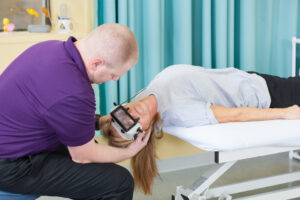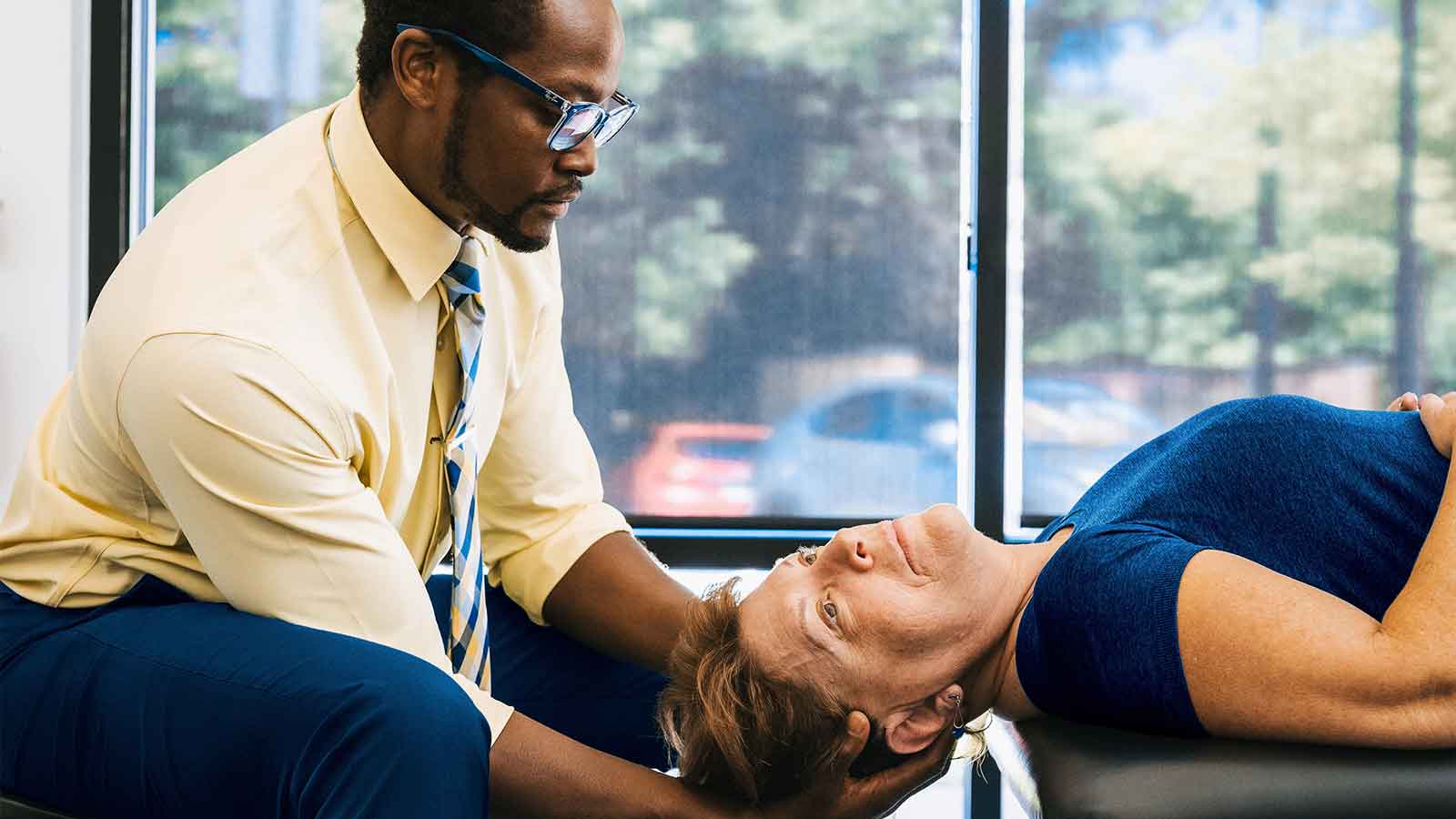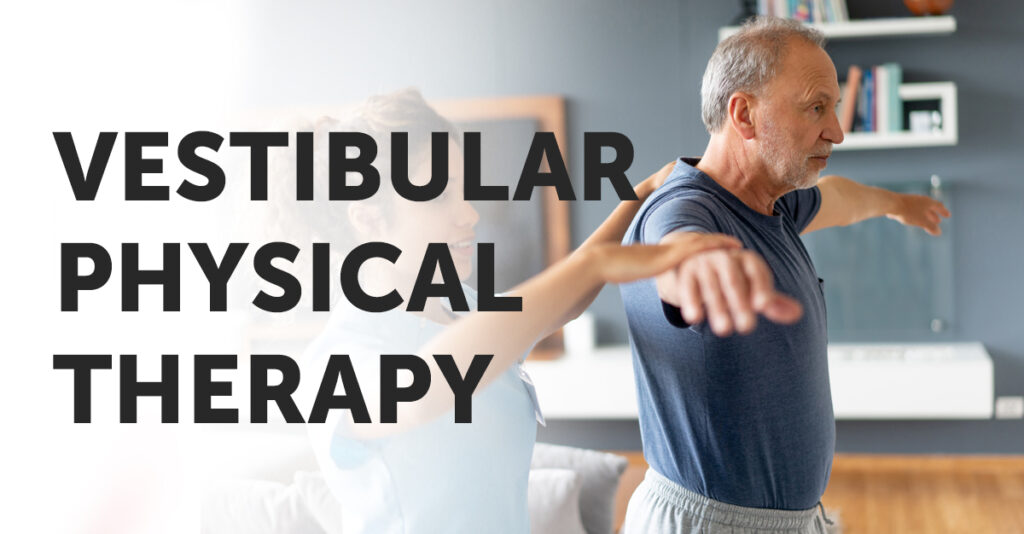Vestibular Rehabilitation Therapy (VRT) is a treatment for people with injuries or diseases affecting the balance system in the inner ear. This therapy helps to improve function and quality of life by restoring lost balance and coordination. In this blog post, we will provide a detailed guide on VRT, including information on what it is, how it works, and its benefits. We will also provide tips on how to find the best VRT therapist and how to prepare for your first VRT session.
Contents
What is Vestibular Rehabilitation Therapy?

Vestibular Rehabilitation Therapy (VRT) helps people with conditions affecting the vestibular system, such as vertigo and dizziness, regain balance and feel more confident in their surroundings.
VRT is based on the theory that abnormalities in the vestibular-ocular reflex (VOR) cause dizziness and vertigo. The VOR is a reflexive movement of the eyes that helps us maintain our balance. When there is an imbalance or injury to the VOR, patients can experience vertigo and/or dizziness.
VRT involves a series of exercises to help restore balance and function to the VOR. These exercises are often done in conjunction with medication or surgery to restore House Balance Status (HBS). HBS is a measure of how stable a person’s equilibrium is and determines whether VRT is necessary.
There are many different types of VRT therapies available, but most focus on one or more of the following areas: retraining the brain; correcting muscle imbalances; improving joint mobility; strengthening connective tissue; increasing awareness; and providing support for daily living tasks.
Types of VRT
There are many different types of VRT, which can be broken down into some general categories. These include cerebrospinal fluid (CSF) shunting, labyrinthine stimulation, and balanced lifting therapy.
Cerebrospinal fluid (CSF)
Cerebrospinal fluid (CSF) is a clear, straw-colored liquid that flows through the ventricles of the brain and spinal cord. CSF helps protect and cushion the brain and spinal cord.
CSF is produced by the choroid plexus in the lateral ventricles of the brain and by the arachnoid villi in the meninges around the brain and spinal cord. The CSF flow through these channels is regulated by nerve cells in these areas.
The main functions of CSF are:
1) To protect the brain and spinal cord from damage caused by physical forces or disease
2) To help regulate vital body processes, such as blood circulation and breathing
3) To provide an environment for nerve cells to function properly.
Labyrinthine Stimulation
Labyrinthine stimulation, a type of vestibular rehabilitation therapy, is an effective treatment for patients with dizziness and balance problems. This therapy uses small electrical stimulations to help restore balance and coordination in the inner ear.
Labyrinthine stimulation typically begins with a series of tests to determine which type of stimulation is most effective for the individual patient. The stimulator is then attached to the patient’s head using electrodes, and the stimulation is delivered through the electrodes to the inner ear.
The main benefits of labyrinthine stimulation are that it is both safe and effective. It has been shown to improve symptoms such as dizziness, balance problems, and headaches in patients who use it regularly. Additionally, Labyrinthine stimulation can be used in combination with other forms of rehabilitation, such as physical therapy or occupational therapy.
Balanced Lifting Therapy
Balanced lifting therapy is a type of Vestibular Rehabilitation Therapy (VRT) that focuses on restoring balance in the inner ear. VRT is often used to treat disorders like vertigo, dizziness, and balance problems.
There are two main types of balanced lifting therapy: static and dynamic. Static-balanced lifting therapy involves patients sitting or standing in one position with their eyes closed while a therapist balances them. Dynamically balanced lifting therapy involves patients moving around while a therapist balances them.
Both types of balanced lifting therapy have proven to be effective in restoring balance in the inner ear. However, static balanced lifting therapy may be more comfortable for some patients due to its lack of movement.
How VRT Works?

Virtual Reality Therapy (VRT) is a type of rehabilitation therapy that uses virtual reality technology to help people with vestibular disorders. Vestibular disorders are conditions that cause problems with the senses of balance and motion. VRT can help people with these disorders regain their balance and mobility.
The basic idea behind VRT is to use virtual reality technology to create realistic environments in which people can test their skills. This allows people with vestibular disorders to learn how to maintain their balance and mobility in different situations.
There are a few different ways that VRT can be used. One way is to use VR to help people learn how to walk again after a stroke or spinal cord injury. Another way is to use VR to teach children with developmental coordination disorder how to better control their movements.
VRT is still in its early stages, so there are still many unanswered questions about it. However, the potential benefits of using VRT for rehabilitation are already apparent. By helping people regain their balance and mobility, VRT could have a big impact on the quality of life for those who suffer from vestibular disorders.
The working of VRT has been studied in detail by several researchers. So far, the evidence suggests that VRT is an effective treatment for people with vestibular disorders.
Sometimes, people with vestibular disorders experience problems with their sense of balance even when they are not in a VR environment. This is because VRT uses virtual reality technology to create realistic environments in which people can test their skills.
The use of VRT is an effective treatment for people with vestibular disorders. In a study published in the journal Current Biology, researchers tested the effects of VRT on 67 people who had a variety of vestibular disorders. The participants were divided into three groups: the control group, the VRT group, and the VRT+ group.
The results showed that the VRT+ group improved more than the other two groups in terms of their ability to maintain their balance and mobility in different situations. The study also showed that the use of VRT was safe and helped improve the patient’s quality of life.
Benefits of VRT

Some of the benefits of VRT are:
Improves Coordination
Vestibular rehabilitation therapy (VRT) is a treatment for dizziness and balance disorders that employs physical exercises and counseling. VRT also helps to improve coordination. This may lead to improved daily activities. Due to the wide variety of exercises that are in VRT, it is important to find a therapist who has experience in this type of therapy.
Improves Balance
Some of the exercises used in VRT can help improve balance and stability. These include balance activities that require moving while standing, walking with a cane or walker, and using a treadmill to practice walking. Additionally, exercises that involve learning how to use visual cues to maintain steady movements may also include as part of the treatment plan.
Reduces Vertigo Symptoms
VRT often reduces vertigo symptoms caused by inner ear problems such as benign paroxysmal positional vertigo (BPPV). Exercises focus on retraining the brain to become more aware of changes in head and body position. This can help reduce the dizziness associated with BPPV episodes.
Improves Quality of Life
VRT has been shown to help improve the overall quality of life by reducing dizziness, improving balance and coordination, and increasing a person’s ability to perform daily activities. This can lead to enhanced confidence in one’s self and improved emotional well-being.
Improves Confidence
VRT can help increase confidence in performing everyday tasks. These may have previously been difficult due to balance or coordination problems. With the guidance of an experienced therapist, VRT can help reduce symptoms of dizziness and improve physical abilities, leading to increased confidence in movement.
How To Start a VRT Program?

Starting a VRT program is not as hard as you may think. Some of these steps of starting a VRT program include:
Step 1
One of the most important steps in starting a VRT program is to seek advice from a qualified healthcare provider. These are such as an audiologist, physical therapist, or neurologist. These professionals can assess your condition and develop a personalized treatment plan for you.
Step 2
Once you have spoken with a healthcare provider about beginning VRT, the next step is to find a facility that offers this type of therapy. Many clinics and hospitals specialize in vestibular rehabilitation therapy. It’s important to be sure that the facility you choose has experienced specialists on staff who are knowledgeable about VRT techniques and have access to necessary equipment.
Step 3
This step in creating your VRT program is establishing an exercise routine that works best for you. Your healthcare provider will provide you with a list of exercises that can be very beneficial for vestibular rehabilitation therapy. It is important to stick with your exercise routine and practice the exercises regularly to get the most out of your VRT program.
Step 4
The last step of creating your VRT program is tracking your progress. It’s essential to document the exercises you do, how long they took, and any changes in symptoms that occur after each exercise session. This can help you determine which activities are working best for you, as well as identify any areas of improvement.
Conclusion
Vestibular rehabilitation therapy (VRT) is a specialized treatment that helps people with balance issues regain movement and coordination in their vestibular system. This system helps you orient yourself in space. Also, VRT can help to restore lost function. This is by teaching patients how to properly use their vision, hearing, and balance to navigate their surroundings. In this detailed guide, we have discussed the benefits of VRT, as well as the procedure for undergoing it. Hopefully, after reading this article you will have a better understanding of what VRT is and why it might be helpful for you.
Physical Therapy help patients recover from pain. If you’re experiencing Back pain, Shoulder pain, Knee pain, Neck pain, Elbow pain, Hip pain, or Arthritis pain, a physical therapist at MantraCare can help: Book a physiotherapy session.


